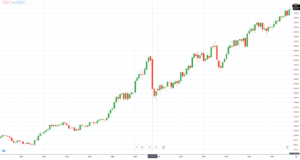What Is an Eclipse?
An eclipse (ee-CLIPS) takes place when a planet or moon passes between another planet, moon or the sun. There are two kinds of eclipses. One is an eclipse of the moon. The other is an eclipse of the sun.
An eclipse (ee-CLIPS) takes place when a planet or moon passes between another planet, moon or the sun. There are two kinds of eclipses. One is an eclipse of the moon. The other is an eclipse of the sun.
What Is a Lunar Eclipse?
The moon orbits, or goes around, Earth. Earth orbits, or goes around, the sun. Once in a while, Earth lines up directly between the sun and the moon. When this happens, Earth blocks the light from the sun to the moon. Earth’s shadow then falls on the moon. This is an eclipse of the moon. It is called a lunar eclipse.
During a lunar eclipse, we can see Earth’s shadow on the moon. When Earth completely blocks the sunlight, the moon looks red or orange. A lunar eclipse can last for a few hours. At least two lunar eclipses happen every year.
Did You Know? It is believed that lunar eclipses taught people that Earth is round. A long time ago, people thought that Earth was flat. Then they saw Earth’s shadow on the moon. They learned that Earth is round.
What Is a Solar Eclipse?
Sometimes when the moon orbits Earth, it lines up directly between the sun and Earth. When this happens, the moon blocks the light of the sun. This causes an eclipse of the sun, or a solar eclipse. During a solar eclipse, the moon casts shadows onto Earth.
A solar eclipse happens during the daytime. The daylight grows dim. Sometimes the moon blocks almost all of the sunlight. Then the daytime can look as dark as night during a solar eclipse!
Solar eclipses happen once every 18 months. Solar eclipses only last for a few minutes.
Did You Know? You should NEVER look directly at the sun –not even during an eclipse when the moon blocks the sunlight! A solar eclipse is exciting. But looking at the sun is dangerous. It can damage your eyes.
Why Does NASA Study Eclipses?
NASA scientists want to learn more about the moon. They took the moon’s temperature during a lunar eclipse. They wanted to see how fast the moon cooled when Earth’s shadow was on it. This helped NASA learn what the moon might be made of. The moon is our nearest neighbor, yet there is still much to learn about it.
NASA can study the top layer of the sun during some solar eclipses. The moon blocks the brightest rays of sunlight. This makes it easier for scientists to see the top layer of the sun. Scientists use tools on Earth and tools in space to take pictures of the sun. Then they study what they see.
When Is the Next Eclipse?
On Monday, August 21, 2017, people in North America will be able to see a solar eclipse. Some people will see a total solar eclipse. The moon will completely cover the sun so that only the outer edge can be seen. Others will see the moon cover part of the sun.
REMEMBER: You should NEVER look directly at the sun — not even during an eclipse when the moon blocks the sunlight!
Article Source : https://www.nasa.gov/audience/forstudents/k-4/stories/nasa-knows/what-is-an-eclipse-k4















